
The Bata shoe factory looms incongruously out of the windswept marshlands of Essex. Around the factory are hundreds of flat-roofed modernist houses. This is East Tilbury, once home to the Bata shoe works and company town.
Odd Days Out recently went on a guided tour of the site, organised through the Bata Heritage Centre. So read on to discover the history of this fascinating site and find out how you can explore this compelling chapter in British social history.
The Bata family
Tomas Bata and his family founded The Bata Shoe Company in 1894, in the town of Zlín in today’s Czech Republic. Tomas’s family were shoemakers for generations.
Bata revolutionised the way that shoes were made, and the company prospered. It introduced a pioneering profit-sharing scheme, meaning everyone had an interest in the success of the business.
Shoemakers to the world
As productivity soared, the business grew and Zlín rapidly became a large town. Bata was soon so successful that it came to dominate shoe sales around the world. By the early 1930s, over half of the shoes sold in the UK were Bata shoes.
Other manufacturers began to lobby their governments to act over what they claimed was “shoe dumping” by Bata, aimed at undercutting domestic shoe producers. Many countries considered imposing tariffs on imported shoes. To get around this problem, Bata decided to open factories in several countries, including the UK.
East Tilbury
Because Britain was in the midst of its worst-ever economic depression, competition for the location of the British factory was fierce.
After careful consideration – and appeals from the local clergy
– Bata decided that East Tilbury would be the ideal location for their factory and construction began in 1932.
For the next 70 years, the factory was the dominant economic and social force in the area. It provided a unique model of a company town in Britain, complete with worker housing, schools and entertainment.
Tragically, Tomas Bata died in a plane crash in 1932 before he could see his vision realised. After his demise, his half-brother Jan Bata took over ownership of the Bata company. But the company’s ethos remained unchanged
Revolutionising shoe manufacturing
There was little skilled labour in Tilbury before Bata arrived. Levels of unemployment and destitution were high. Tomas Bata saw this as an opportunity.
The Bata system of shoe production meant that the company was able to quickly train its workers. Rather than skilled artisans producing a single pair of shoes, Bata workers would perform one task repeatedly on a production line of shoes.
Not only did this mean that people could go from being unemployed to earning a decent wage in a short time, it also produced shoes faster and cheaper. This meant there was a constant stream of people coming to the factory to find work.
Creating a Utopia in Essex
In many ways, Bata used the same techniques that Henry Ford did to revolutionise car manufacturing. But what made the Bata system different was the way it incorporated a Utopian vision of communitarian living into the heart of its business model.
The wages paid were higher than most competitors and the company maintained its policy of issuing profit shares and stock options. Bata workers also met regularly with managers in a formalised process to ensure management heard their voices. Managers were mainly recruited through internal factory promotions.
Post-war boom
The nationalisation of Bata’s production sites by the communist governments in eastern Europe was a blow to the organization.
Without its factory in Zlín, Bata had to start again from a weakened position, expanding into newly emerging markets throughout Asia, the Middle East, Africa and Latin America. By 1962, the company had production and sales activities in 79 countries.
The Bata factory in East Tilbury remained in steady use and enjoyed a post-war boom. In it’s heyday, no High Street in the country wanted to be without a Bata shoe shop.
In decline
During the 1960s, Bata’s production gradually started to shift to factories closer to its export markets. As with so much of British industry, decline and downsizing occurred in the 1980s and the Bata factory finally closed in 2005. Sadly, the great social experiment of East Tilbury had run its course.
Visiting Bata-ville (East Tilbury)
1. The Bata Heritage Centre
Although the town is freely accessible, there is restricted access to the factory site. For that reason, the best way to visit is go on one of the organised tours run by the Bata Heritage Centre who are based in East Tilbury Library (Point 1 on the map). These are often led by former Bata workers.
You can also access a a fascinating archive of people’s experiences living in and growing up in East Tilbury through the Centre’s website.
2. The factory
The main factory complex is located in the Thames Industrial Park (2). Built in the 1930s it clearly shows the Bauhaus influence on its design. At its height, over 7,000 people worked here. Sadly, part of the site is now derelict.
Like the mother factory in Zlín, nearly all the components needed for the manufacturing of shoes were on site: the tanneries producing leather, workshops for making rubber and even a farm to provide food.
The company town provided the workers, and their families with all they needed for everyday life at affordable prices, including housing, shops, schools, a hotel, a fire station and a local newspaper. A pint of Bata milk was even delivered each morning from the Bata dairy!
3, 4, 5. Workers’ Houses
In 1933 Bata unveiled the first “Bata houses” for workers in Bata Avenue (3), set out in a chequerboard pattern, some with larger front gardens and some with larger back gardens. This meant that neighbouring houses were not immediately next to each other, giving a feeling of space and tranquillity.
Built of steel and reinforced concrete with flat roofs, these were some of the earliest modernist buildings in Britain. Bata employed Czech architects František Gahura and Vladimír Karfík as the principle designers on the site.
Further housing followed over the next couple of years in Queen Elizabeth Avenue (4) and King George VI Avenue (5). After a break during the war, house building continued into the 1960s.
Bata rented out the homes to its workers at truly affordable levels – often below the rents charged for council houses.
Bata Schools
The company took the welfare of the children in its community extremely seriously. The Bata Estate Primary School opened in 1941 and had room for 100 children under the age of 12.
Originally the school was owned and run by Bata but was later taken over by the Essex education authority. Bata continued to help the school; some of its managers served as governors and they also supported the school financially. The East Tilbury Primary School now occupies the site.
Next to the primary school stood the Bata Technical College. It selected 30 or so young adults each year for a three-year course in subjects such as production management, commerce and accountancy. As a result, students came from all over the country and many graduates found high-level jobs in the company – often overseas.
6. The Espresso bar
A large modernist espresso bar opened on the Estate in 1960 complete with genuine Italian coffee machines (6). During the day, it was usually frequented by factory workers, but in the evening, it was a popular hangout for teenagers. It even had its own jukebox.
Today the building has lost much of its sleek modernist lines and has been divided into smaller retail units.
7. The Bata Hotel
The five-story Bata hotel is now called Stanford House (7) and has been converted into apartments. But in its previous life, this stunning building had several functions, including a workers’ canteen and accommodation for single Bata workers or couples without children. If couples started a family, then they would move into one of the Bata houses.
Originally, the ground-level retail units also featured a range of Bata shops including the Bata supermarket, the Bata hairdressers and the obligatory Bata shoe shop.
The Bata legacy
The idea of a company town like Bata seems out of kilter with today’s business practices of outsourcing, subcontracting and zero-hours contracts. It is ironic that in 2017 Amazon chose East Tilbury as the location for one of its massive “fulfilment” centres.
No doubt the jobs created are welcome. But, I imagine most people would see the Bata ethos of providing workers with good wages. affordable high-quality homes and community facilities as civilised, kind and sustainable.
This is in stark contrast to Amazon, whose low wages often leave workers unable to afford decent housing, with some reportedly living in tents outside their warehouses.
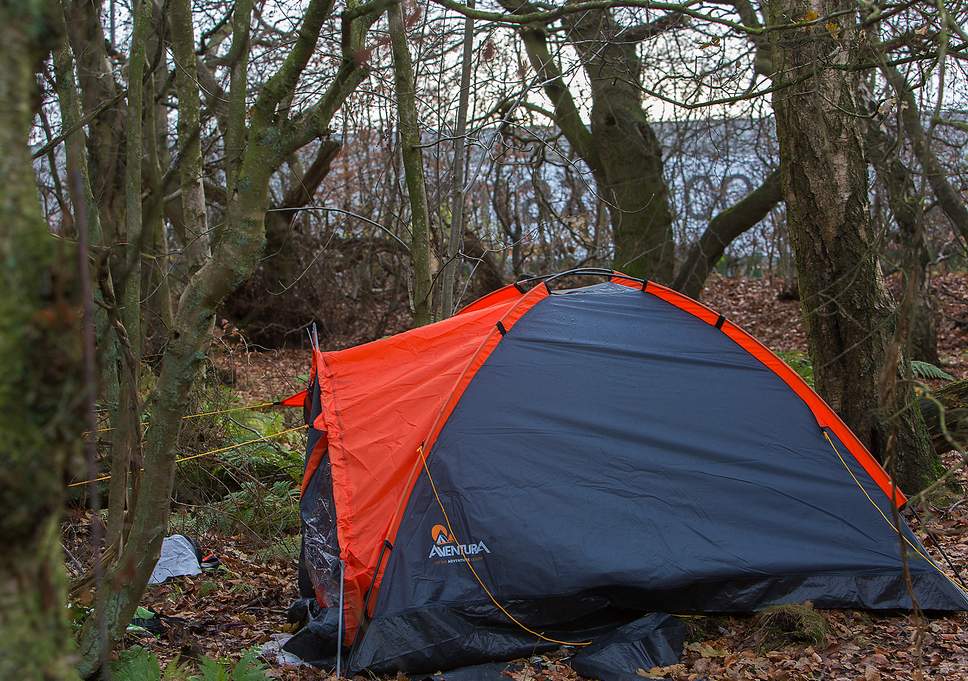
2017 A tent erected by Amazon worker in Scotland unable to afford decent housing 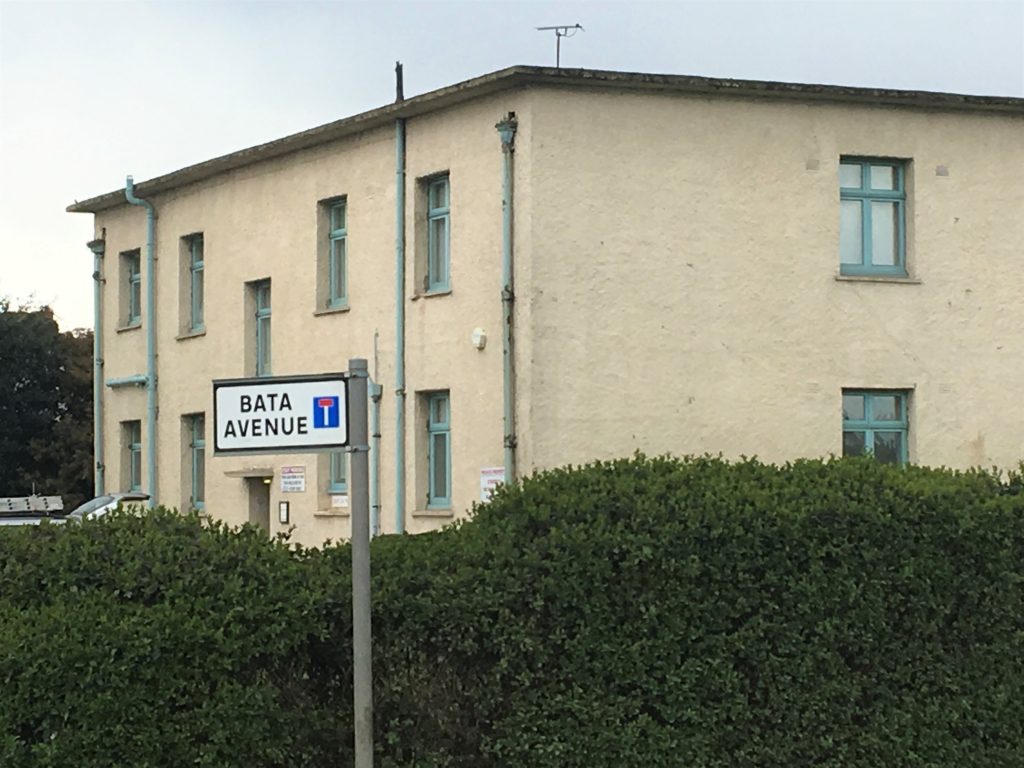
1931 Decent affordable homes for Bata factory workers
Further reading
https://www.bataheritagecentre.org.uk The best source of information on the Bata factory and town. The centre organises regular tours of the site which we strongly recommend.
http://www.batamemories.org.uk An excellent collection of reminiscences from Bata residents and workers.
https://www.radicalessex.uk/bata-estate/ Putting the Bata story into the wider history of communities and communes in Essex from the brilliant Radical Essex site.
https://research.historicengland.org.uk/ Fascinating and detailed analysis of East Tilbury from Historic England.
Getting there
The factory is in the Thames Industrial Park in Princess Margaret Road RM18 8RH. It’s best to park in the Memorial Park opposite.
East Tilbury station is just a few minutes walk from the factory and has regular trains to London and Southend.
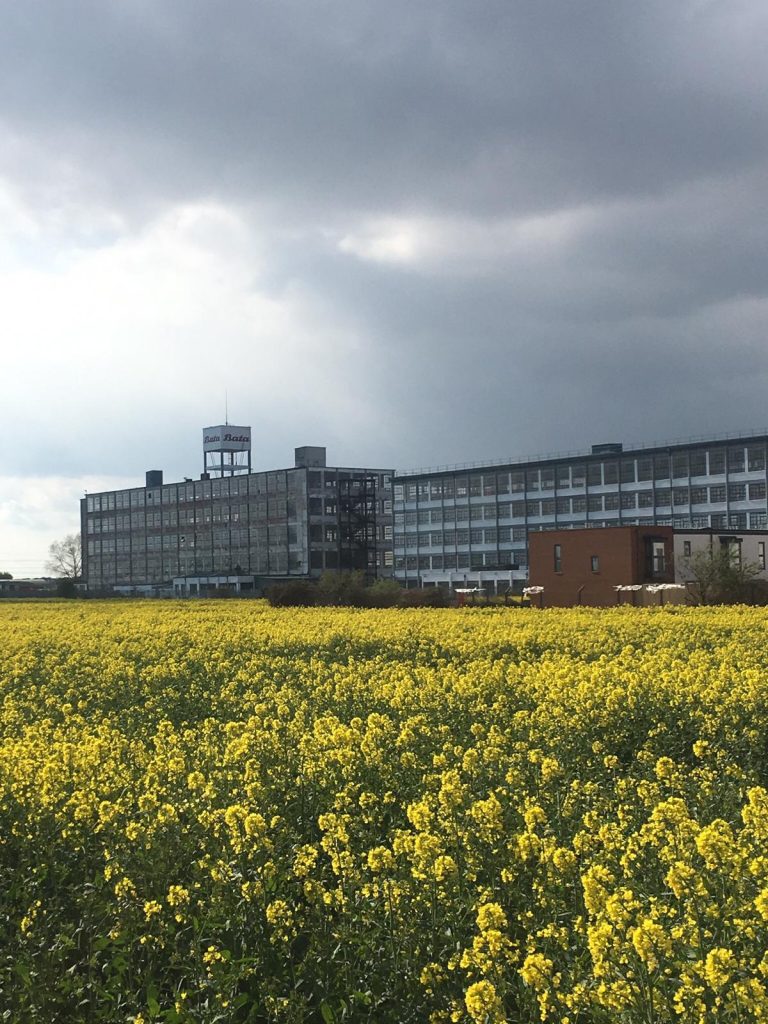
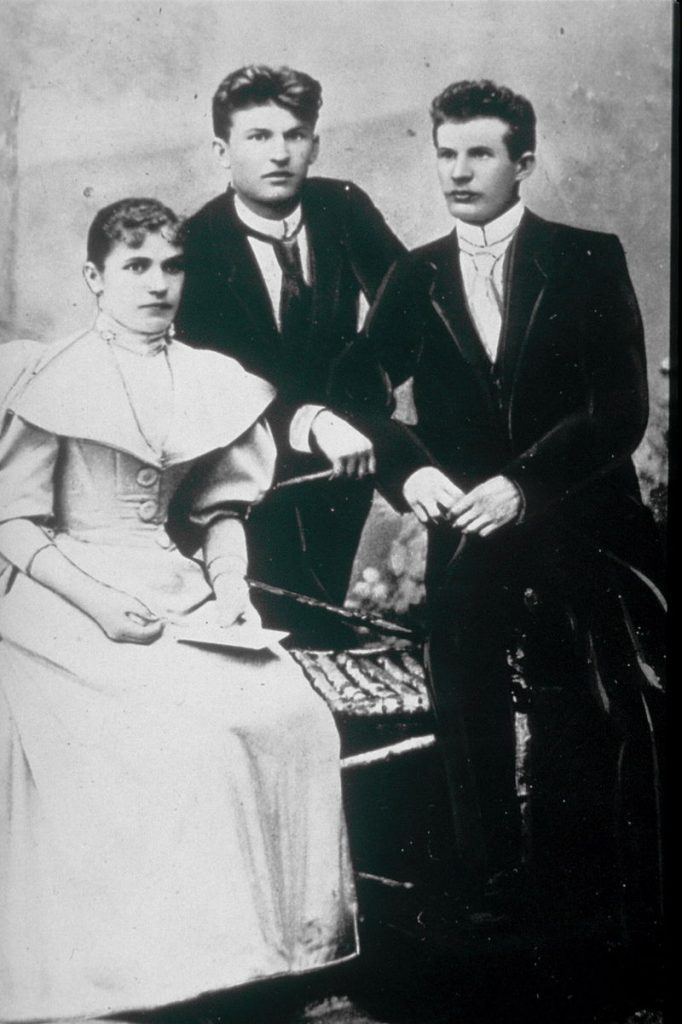
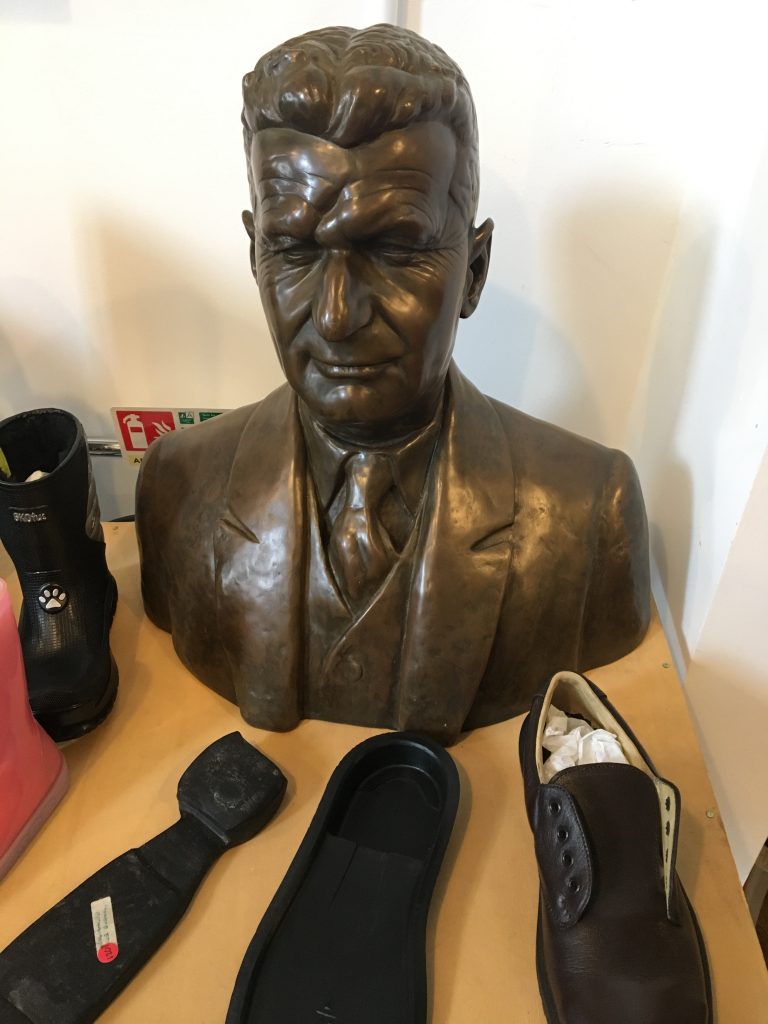
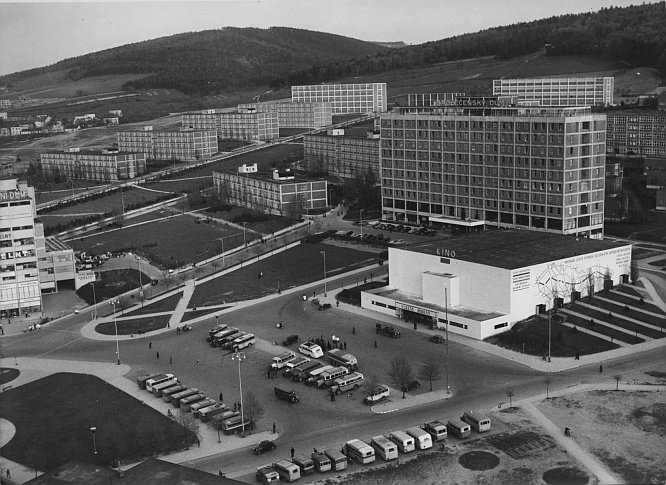
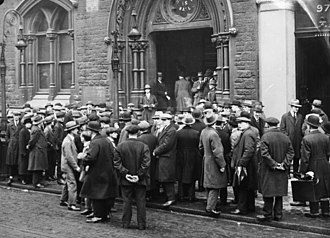
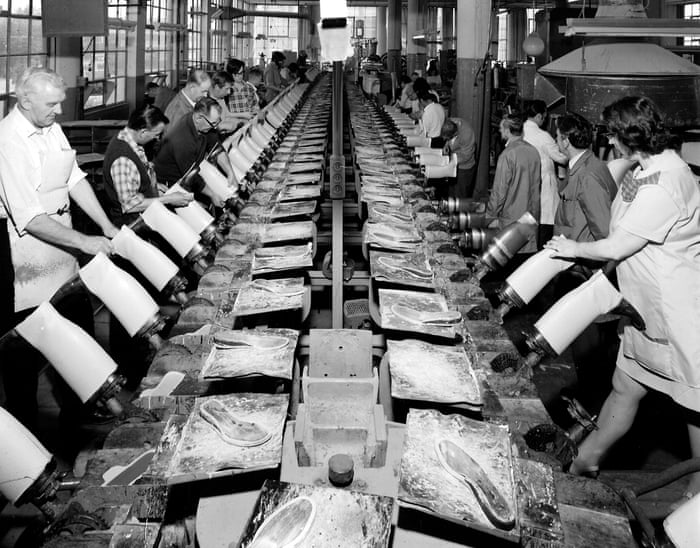
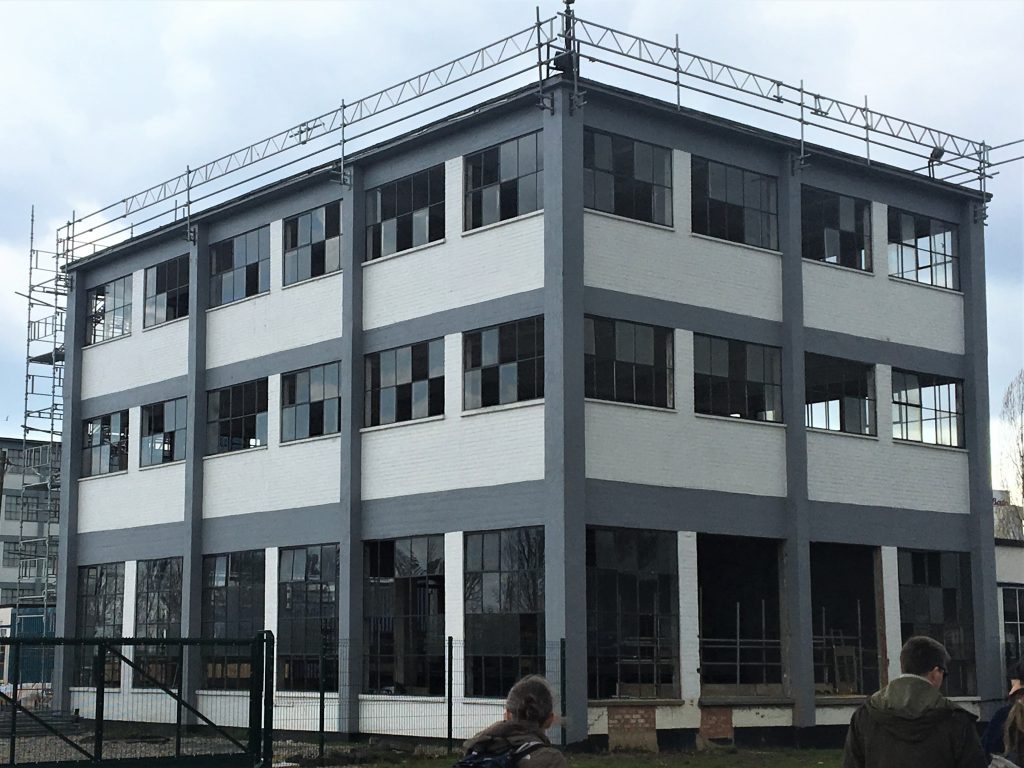
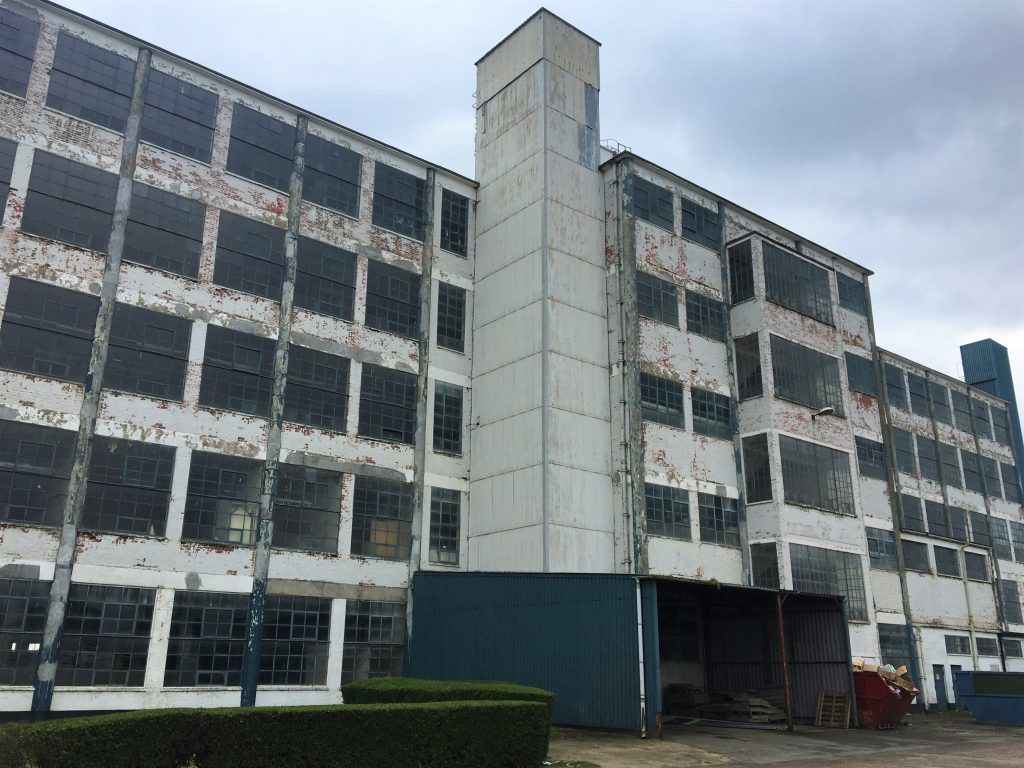
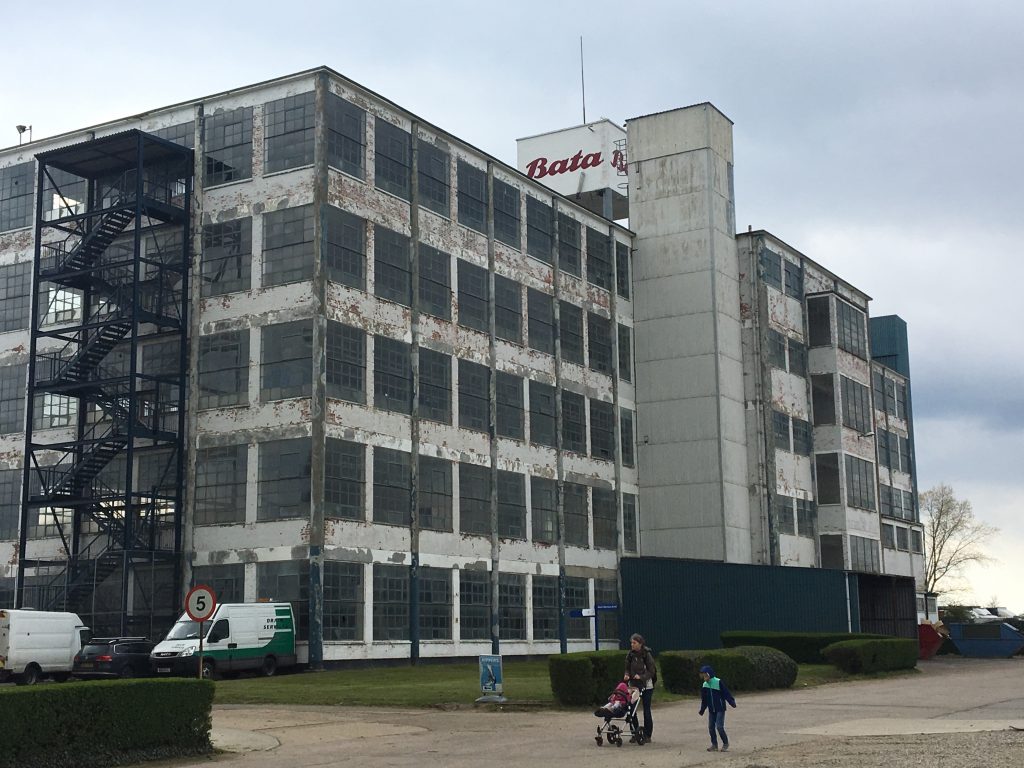
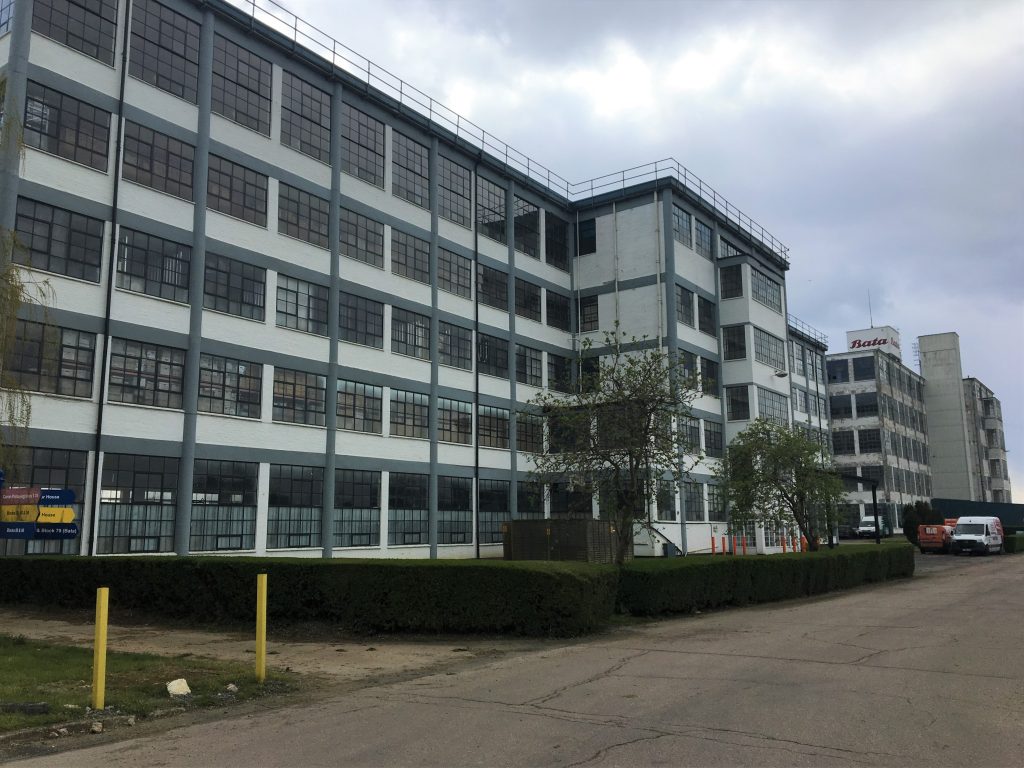

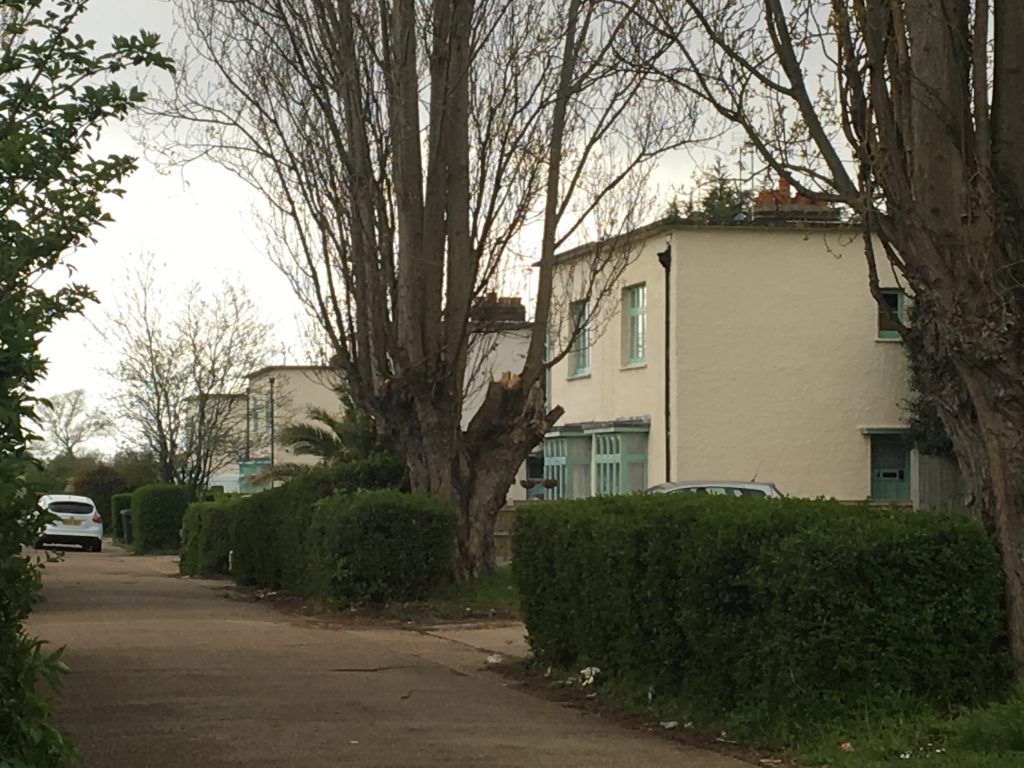
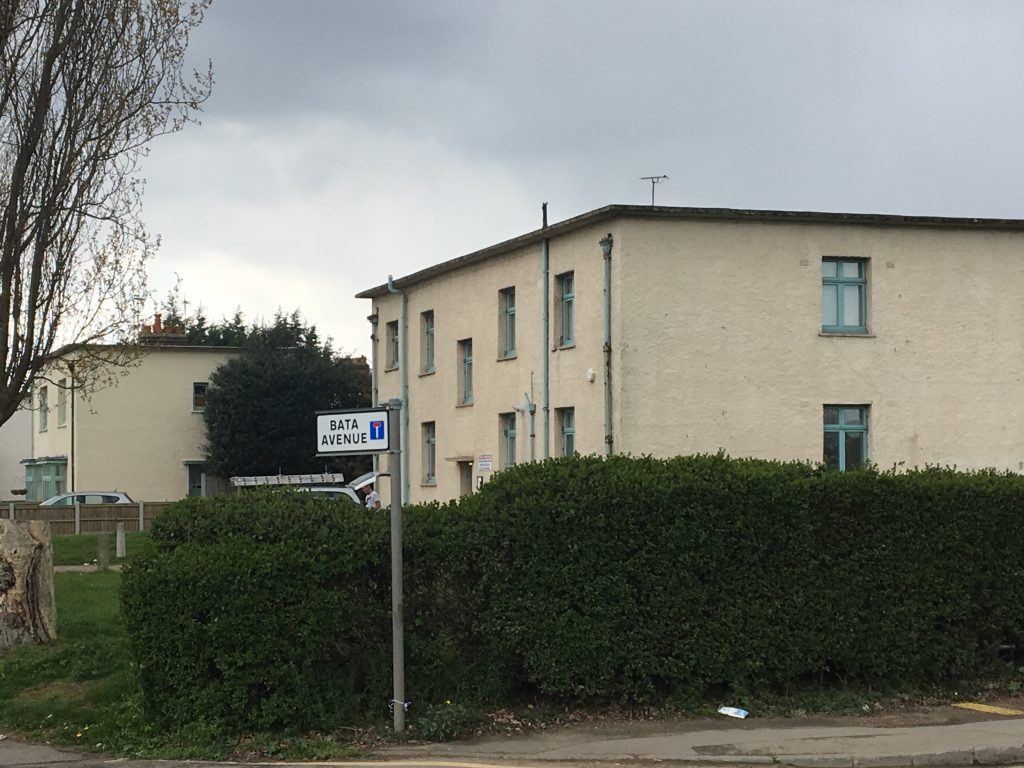
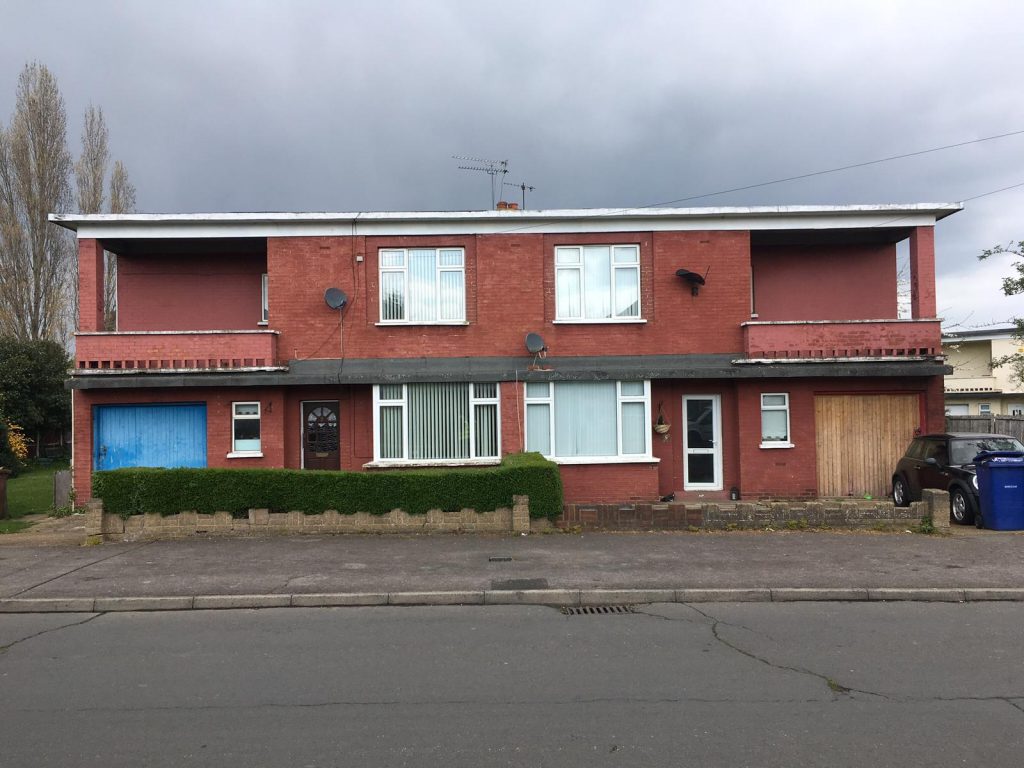
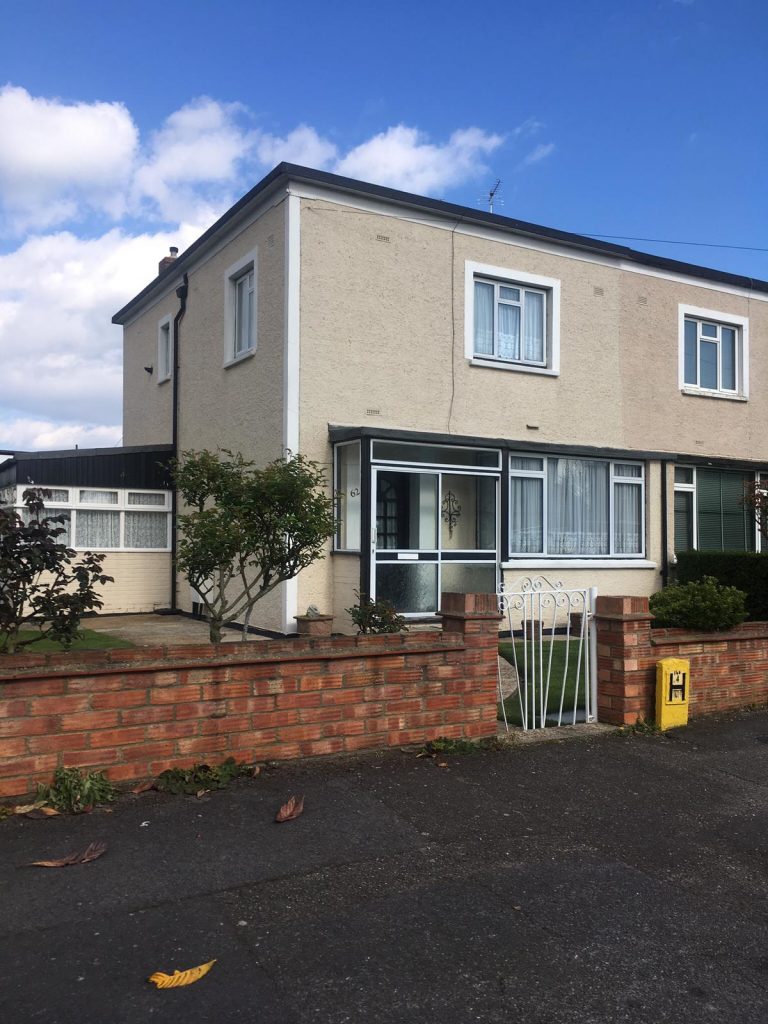


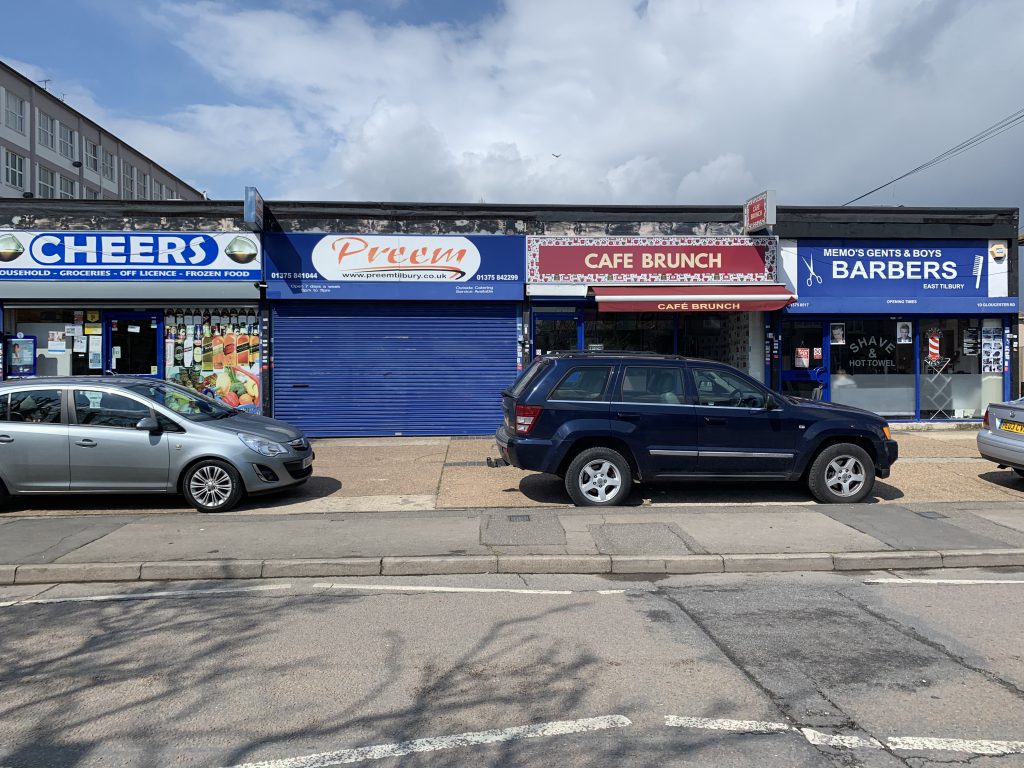
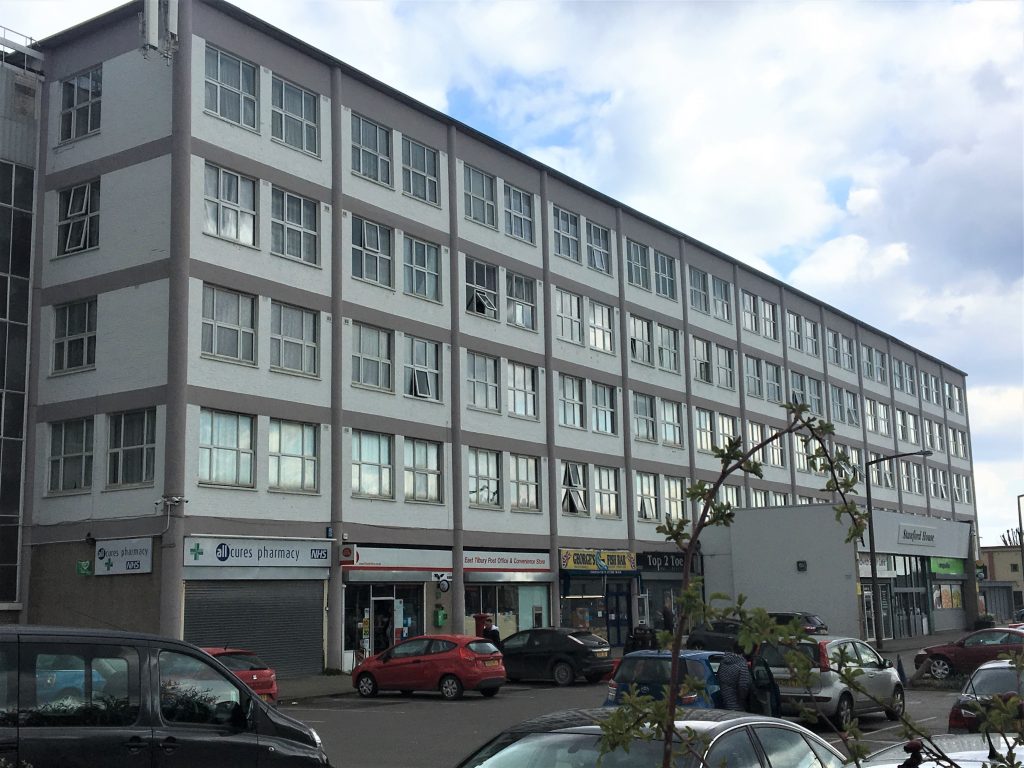
My late mother, Moira Day nee Haughie, worked in the accounts office before enlisting in the WRNS during WW11. She was engaged to George Chaplin who worked in the sample department. Unfortunately he was killed 3 June 1944 on active service over West Africa serving as an RAF pilot. His name is engraved on the war memorial at Bata’s. My mother grew up in Linford and I have recently scattered her ashes there. She never got over losing her fiance.